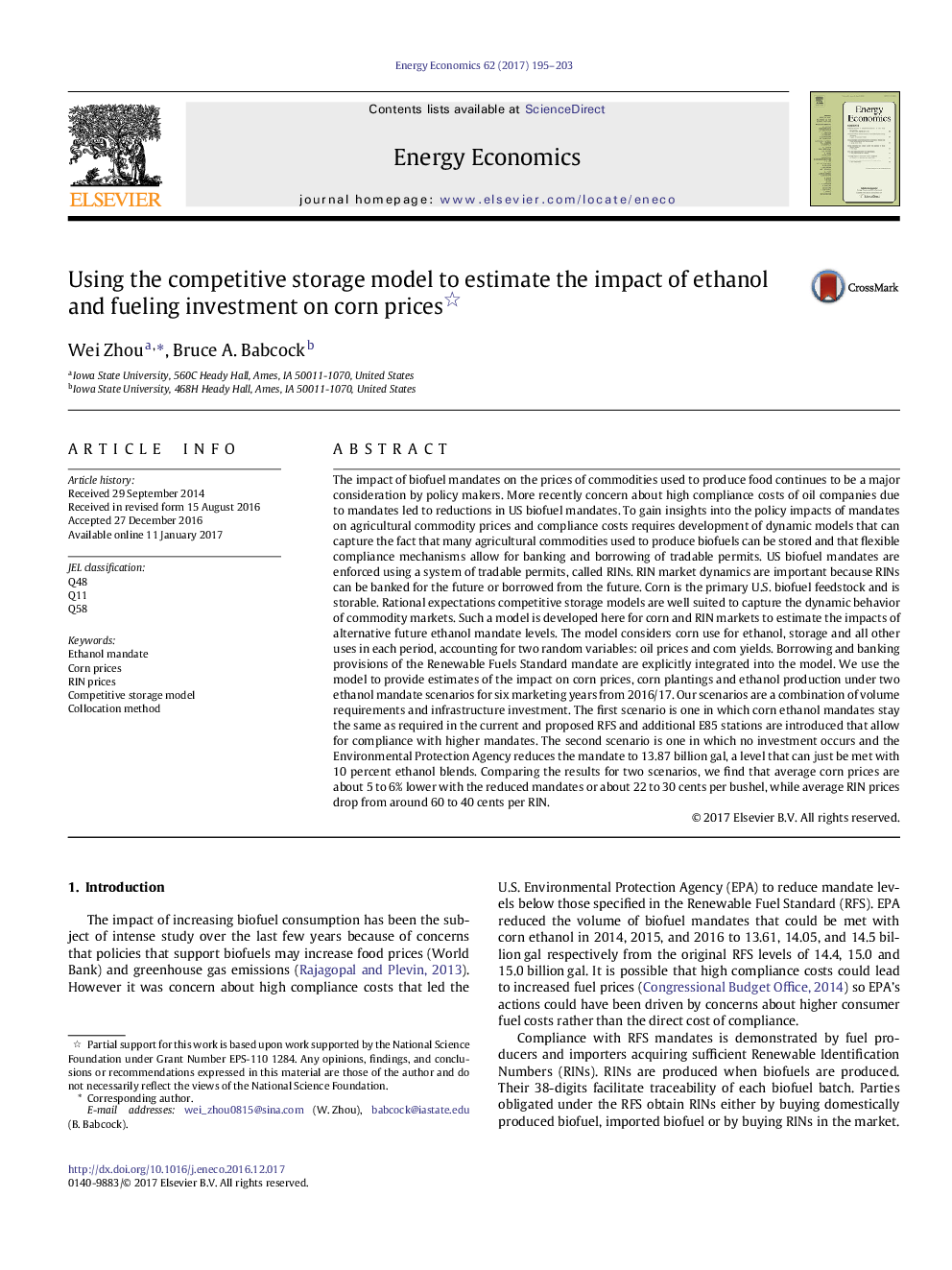| کد مقاله | کد نشریه | سال انتشار | مقاله انگلیسی | نسخه تمام متن |
|---|---|---|---|---|
| 5063769 | 1476702 | 2017 | 9 صفحه PDF | دانلود رایگان |
• The model explicitly connects the US biofuel policy mechanism with the corn market.
• Borrowing and banking provisions of the RFS mandate are also integrated into the model.
• Increasing mandates have rather modest impacts on future corn prices but large impacts on RIN price distributions.
The impact of biofuel mandates on the prices of commodities used to produce food continues to be a major consideration by policy makers. More recently concern about high compliance costs of oil companies due to mandates led to reductions in US biofuel mandates. To gain insights into the policy impacts of mandates on agricultural commodity prices and compliance costs requires development of dynamic models that can capture the fact that many agricultural commodities used to produce biofuels can be stored and that flexible compliance mechanisms allow for banking and borrowing of tradable permits. US biofuel mandates are enforced using a system of tradable permits, called RINs. RIN market dynamics are important because RINs can be banked for the future or borrowed from the future. Corn is the primary U.S. biofuel feedstock and is storable. Rational expectations competitive storage models are well suited to capture the dynamic behavior of commodity markets. Such a model is developed here for corn and RIN markets to estimate the impacts of alternative future ethanol mandate levels. The model considers corn use for ethanol, storage and all other uses in each period, accounting for two random variables: oil prices and corn yields. Borrowing and banking provisions of the Renewable Fuels Standard mandate are explicitly integrated into the model. We use the model to provide estimates of the impact on corn prices, corn plantings and ethanol production under two ethanol mandate scenarios for six marketing years from 2016/17. Our scenarios are a combination of volume requirements and infrastructure investment. The first scenario is one in which corn ethanol mandates stay the same as required in the current and proposed RFS and additional E85 stations are introduced that allow for compliance with higher mandates. The second scenario is one in which no investment occurs and the Environmental Protection Agency reduces the mandate to 13.87 billion gal, a level that can just be met with 10 percent ethanol blends. Comparing the results for two scenarios, we find that average corn prices are about 5 to 6% lower with the reduced mandates or about 22 to 30 cents per bushel, while average RIN prices drop from around 60 to 40 cents per RIN.
Journal: Energy Economics - Volume 62, February 2017, Pages 195–203
